One of the delightful aspects of having a Sting Ray Corvette in the 21st Century is being able to restore it with more efficient fuel delivery and gearing while preserving the iconic Sting Ray image. Fresh from a sympathetic 2008 frame-on restoration, this Corvette has been treated to performance enhancements with the best available parts while maintaining overall originality. Chevrolet’s Corvette, America’s only true sports car, had its debut when the 1953 GM Motorama show opened in New York that January. The first production car emerged less than six months later. Built in fiberglass for expediency and economy, it had a 235 cubic inch “Blue Flame” six with Powerglide automatic transmission. Early sales were slow, but by 1955 the model received the “Hot One,” Chevy’s new V8 introduced that year. The iconic Corvette arrived with the 1956 model. Restyled with a more flowing body, the car was given concave side coves, finished in contrasting color. Engines were all V8s, the 265 cubic inch unit from passenger cars making 210bhp in standard trim and 240 with dual carburetors. Development of the Corvette continued under engineer Zora Arkus-Duntov. The 283 cubic inch V8 was adopted in 1957, making 283bhp with optional fuel injection, and a four-speed transmission was made available. Dramatic change came to the Corvette with the arrival of the second-generation 1963 models. Dubbed “Sting Ray,” from its shape, it was the work of GM styling vice-president Bill Mitchell Retaining the uplifted tail of the 1962 Corvette, Mitchell penned a lovely fastback coupe, accented by a split rear window. Hidden headlamps, the first on an American car since the 1942 DeSoto, were located in the leading edge of the nose. A more conventional looking convertible was also available. A clean-sheet-of-paper design, aside from the small block V8 engine, the Sting Ray featured independent rear suspension, brainchild of engineer Zora Arkus-Duntov. A chassis-mounted differential drove halfshafts, their hubs suspended with a transverse leaf spring. Front suspension continued the unequal length control arms of earlier Corvettes. The small block V8 was enlarged to 327 cubic inches for 1962. The Sting Ray retained this displacement, offering carbureted engines of 250, 300 and 340bhp. The single fuel injection option made 360bhp. Although pure in design, there was customer resistance to the split rear window since it hampered rearward visibility. For 1964 it was made a one-piece affair and fake hood vents were eliminated. Functional front fender louvers were added for 1965, along with four-wheel disk brakes. Further trim changes were made in 1966 and 1967, the latter considered by many the best-looking early Sting Ray, with “cleaner” trim and detail. Rescued by the consignor, this 1967 Sting Ray coupe had wound its way through California life since Ronald Reagan was governor. Sold new in March 1967, it had the popular 300bhp 327 cubic inch engine with four-speed manual transmission and the unusual option of factory side pipes. The correct, matching numbers and stamped engine was updated to 350-horsepower L79 internal specifications, while keeping the original block, head and manifold castings, in particular the much sought-after early “462” heads. A Keisler-modified Tremec TKO five-speed transmission was installed, resulting in 32 percent fewer revolutions in top gear freeway driving. The Keisler five-speed has the virtue of being “green” in that it conserves valuable fuel. The original four-speed has been retained and will accompany the car. Painted in Marina Blue Metallic, the car has a harmonizing medium blue interior. Its very comprehensive equipment list includes a modern transistor ignition, Positraction axle, AM-FM radio, tinted glass, power steering, and disc brakes. This handsome and highly unusual Corvette is attractive to the eye as well as satisfying the ambitious instincts of today’s lifestyle.
One of the delightful aspects of having a Sting Ray Corvette in the 21st Century is being able to restore it with more efficient fuel delivery and gearing while preserving the iconic Sting Ray image. Fresh from a sympathetic 2008 frame-on restoration, this Corvette has been treated to performance enhancements with the best available parts while maintaining overall originality. Chevrolet’s Corvette, America’s only true sports car, had its debut when the 1953 GM Motorama show opened in New York that January. The first production car emerged less than six months later. Built in fiberglass for expediency and economy, it had a 235 cubic inch “Blue Flame” six with Powerglide automatic transmission. Early sales were slow, but by 1955 the model received the “Hot One,” Chevy’s new V8 introduced that year. The iconic Corvette arrived with the 1956 model. Restyled with a more flowing body, the car was given concave side coves, finished in contrasting color. Engines were all V8s, the 265 cubic inch unit from passenger cars making 210bhp in standard trim and 240 with dual carburetors. Development of the Corvette continued under engineer Zora Arkus-Duntov. The 283 cubic inch V8 was adopted in 1957, making 283bhp with optional fuel injection, and a four-speed transmission was made available. Dramatic change came to the Corvette with the arrival of the second-generation 1963 models. Dubbed “Sting Ray,” from its shape, it was the work of GM styling vice-president Bill Mitchell Retaining the uplifted tail of the 1962 Corvette, Mitchell penned a lovely fastback coupe, accented by a split rear window. Hidden headlamps, the first on an American car since the 1942 DeSoto, were located in the leading edge of the nose. A more conventional looking convertible was also available. A clean-sheet-of-paper design, aside from the small block V8 engine, the Sting Ray featured independent rear suspension, brainchild of engineer Zora Arkus-Duntov. A chassis-mounted differential drove halfshafts, their hubs suspended with a transverse leaf spring. Front suspension continued the unequal length control arms of earlier Corvettes. The small block V8 was enlarged to 327 cubic inches for 1962. The Sting Ray retained this displacement, offering carbureted engines of 250, 300 and 340bhp. The single fuel injection option made 360bhp. Although pure in design, there was customer resistance to the split rear window since it hampered rearward visibility. For 1964 it was made a one-piece affair and fake hood vents were eliminated. Functional front fender louvers were added for 1965, along with four-wheel disk brakes. Further trim changes were made in 1966 and 1967, the latter considered by many the best-looking early Sting Ray, with “cleaner” trim and detail. Rescued by the consignor, this 1967 Sting Ray coupe had wound its way through California life since Ronald Reagan was governor. Sold new in March 1967, it had the popular 300bhp 327 cubic inch engine with four-speed manual transmission and the unusual option of factory side pipes. The correct, matching numbers and stamped engine was updated to 350-horsepower L79 internal specifications, while keeping the original block, head and manifold castings, in particular the much sought-after early “462” heads. A Keisler-modified Tremec TKO five-speed transmission was installed, resulting in 32 percent fewer revolutions in top gear freeway driving. The Keisler five-speed has the virtue of being “green” in that it conserves valuable fuel. The original four-speed has been retained and will accompany the car. Painted in Marina Blue Metallic, the car has a harmonizing medium blue interior. Its very comprehensive equipment list includes a modern transistor ignition, Positraction axle, AM-FM radio, tinted glass, power steering, and disc brakes. This handsome and highly unusual Corvette is attractive to the eye as well as satisfying the ambitious instincts of today’s lifestyle.

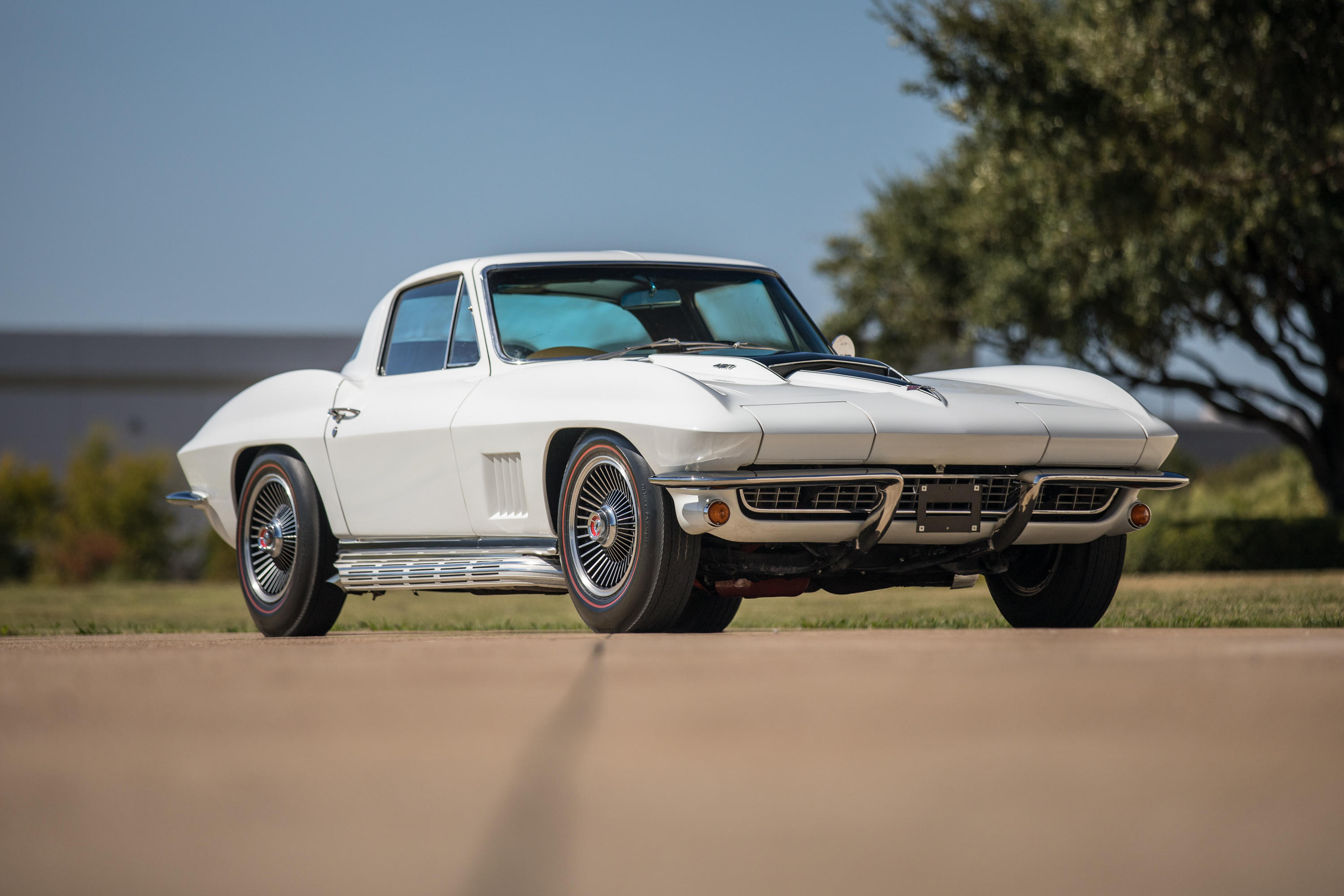
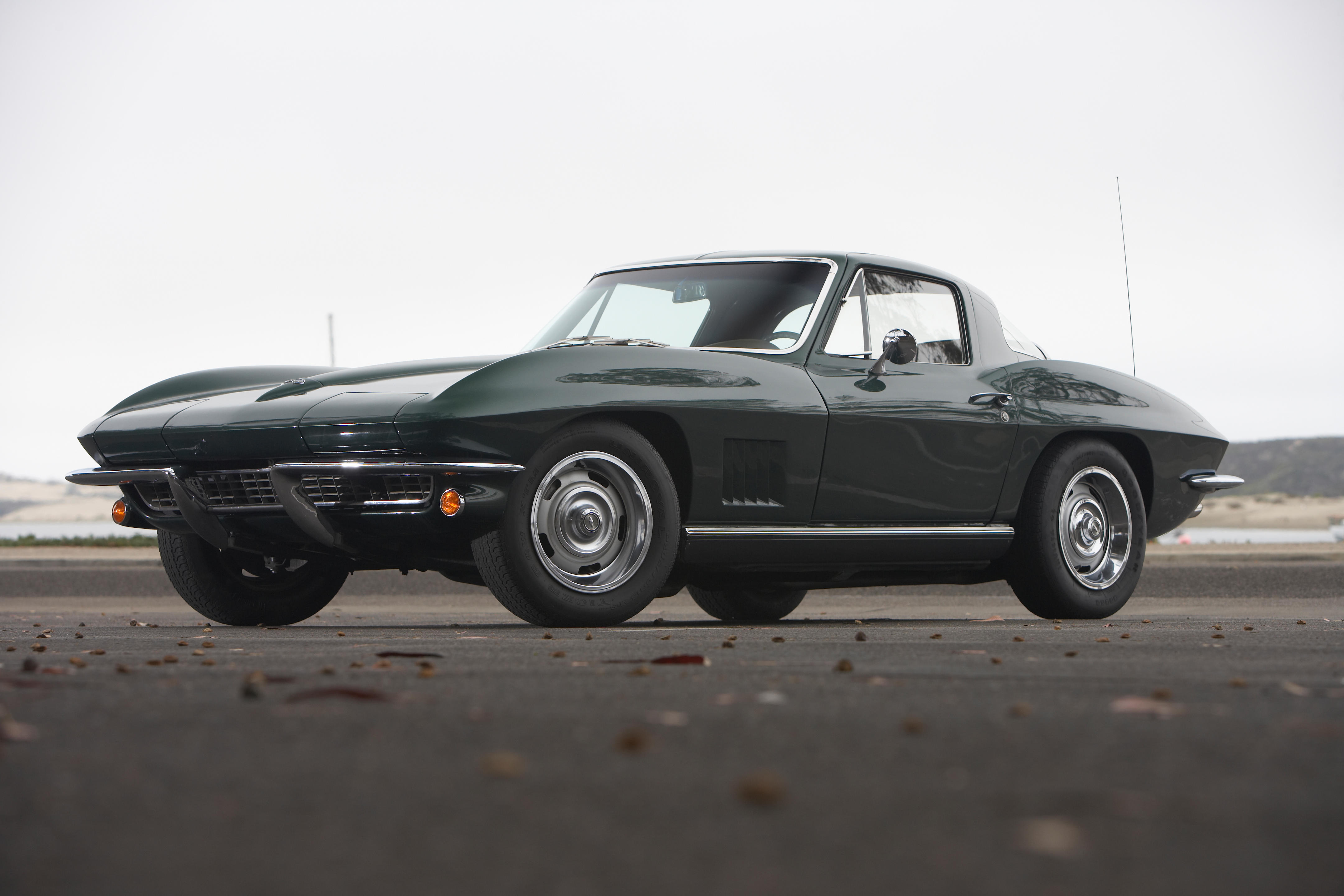
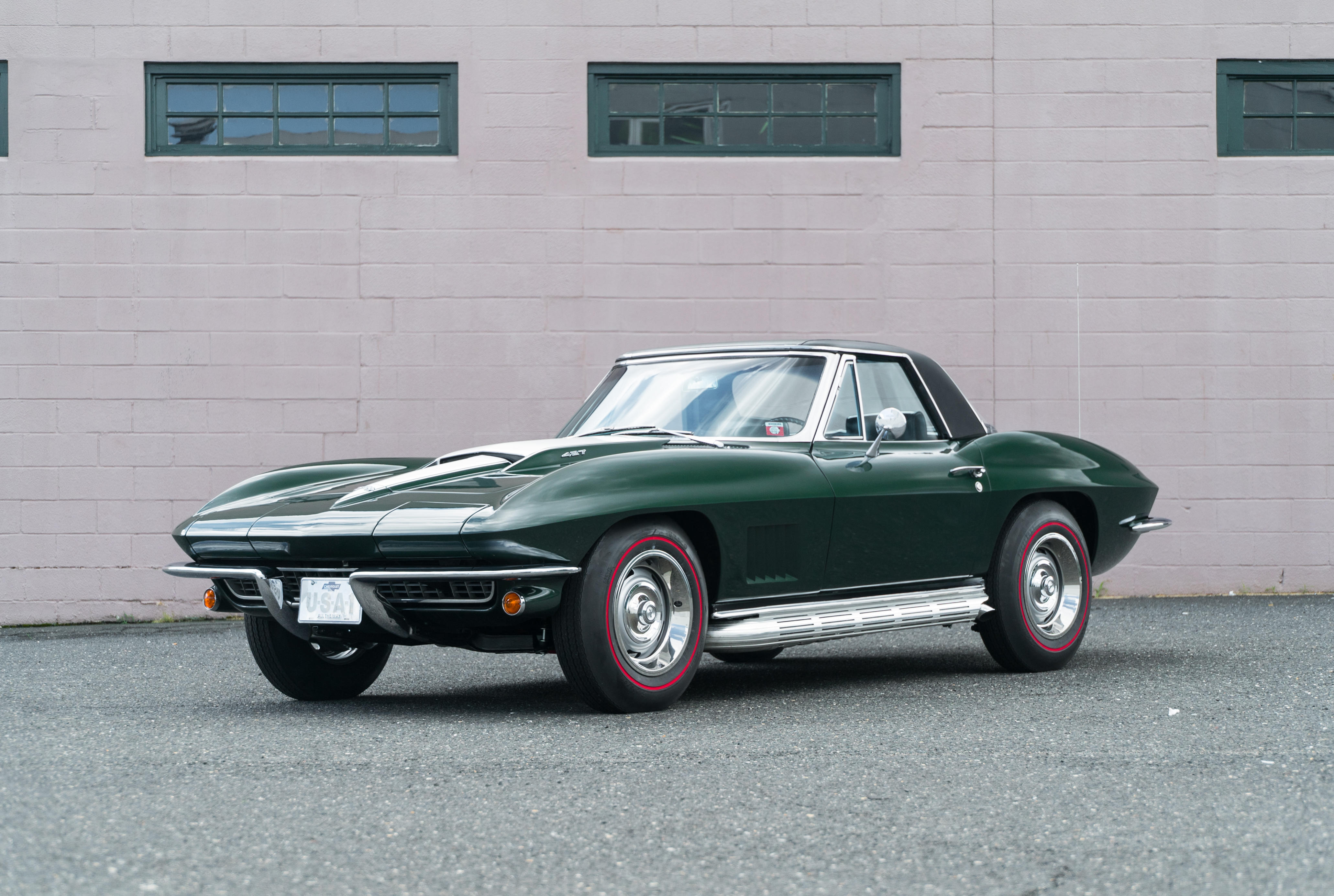
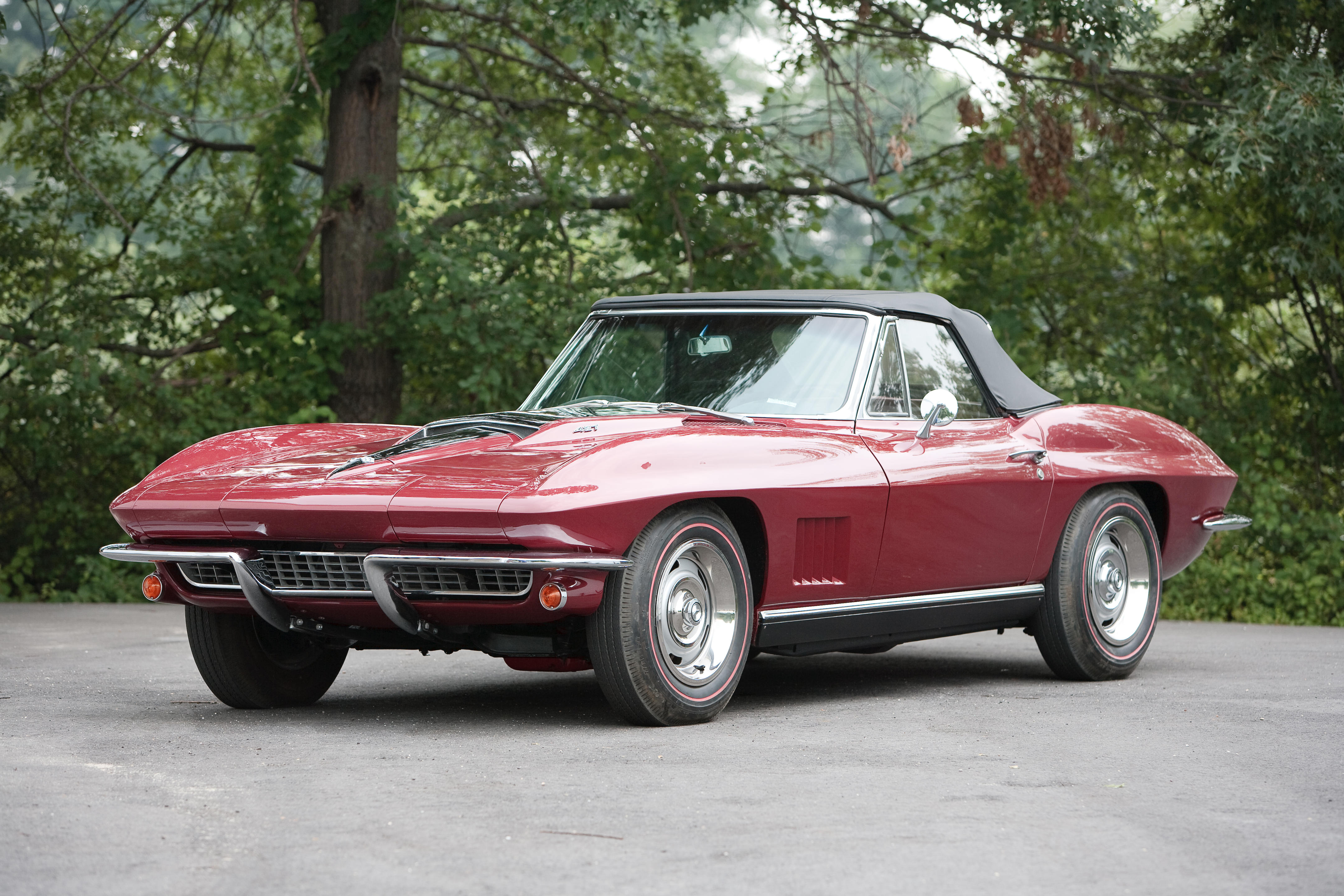


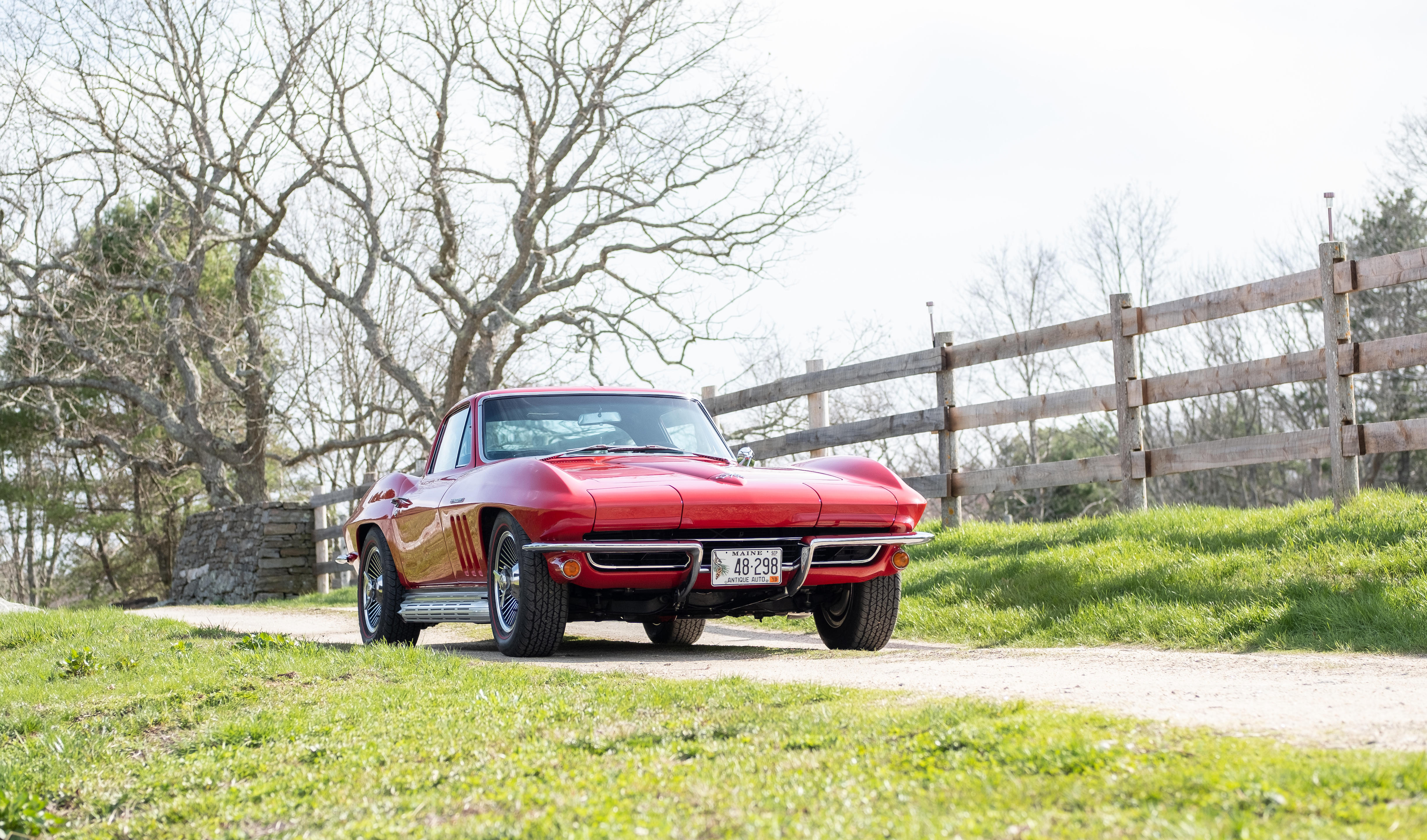
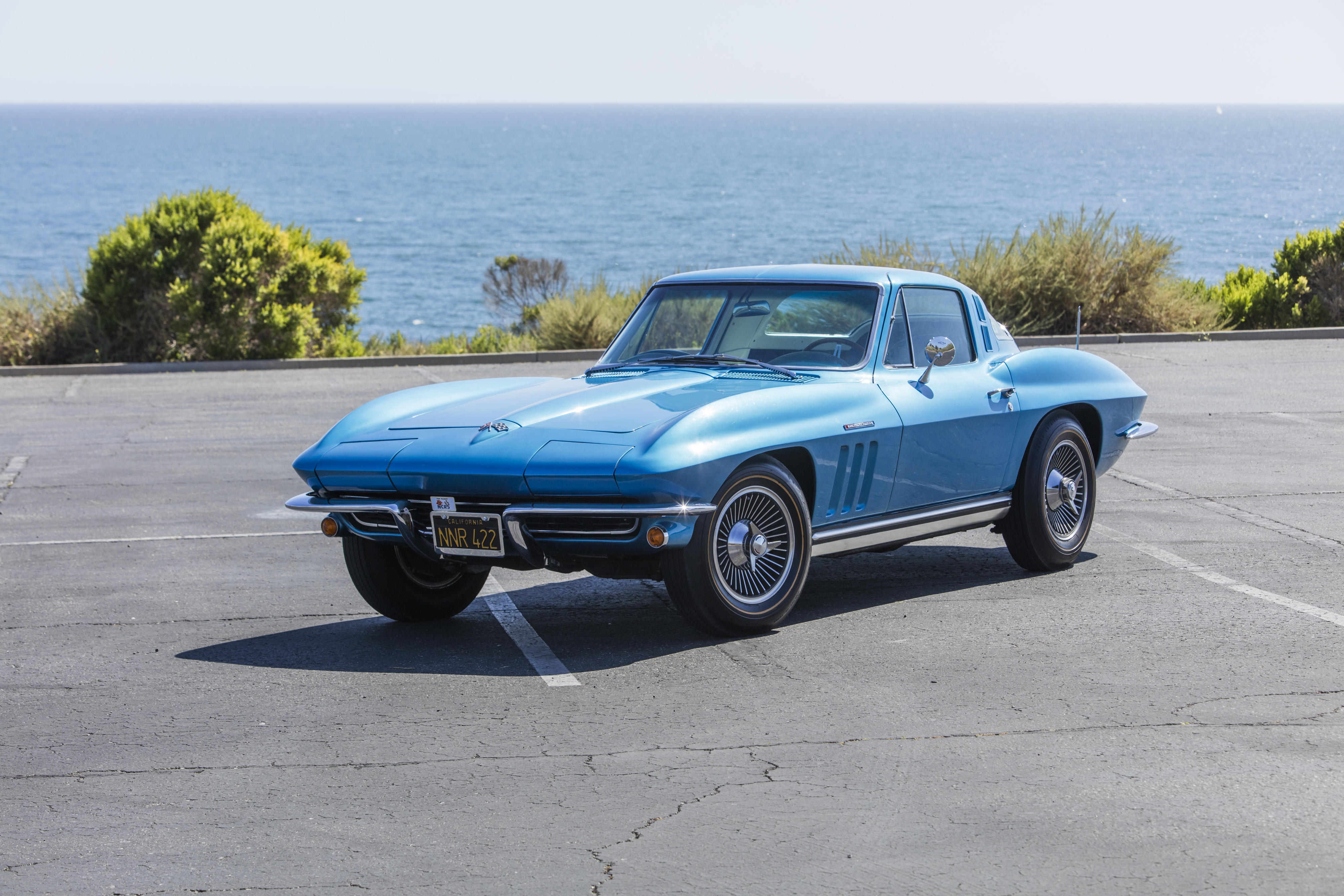

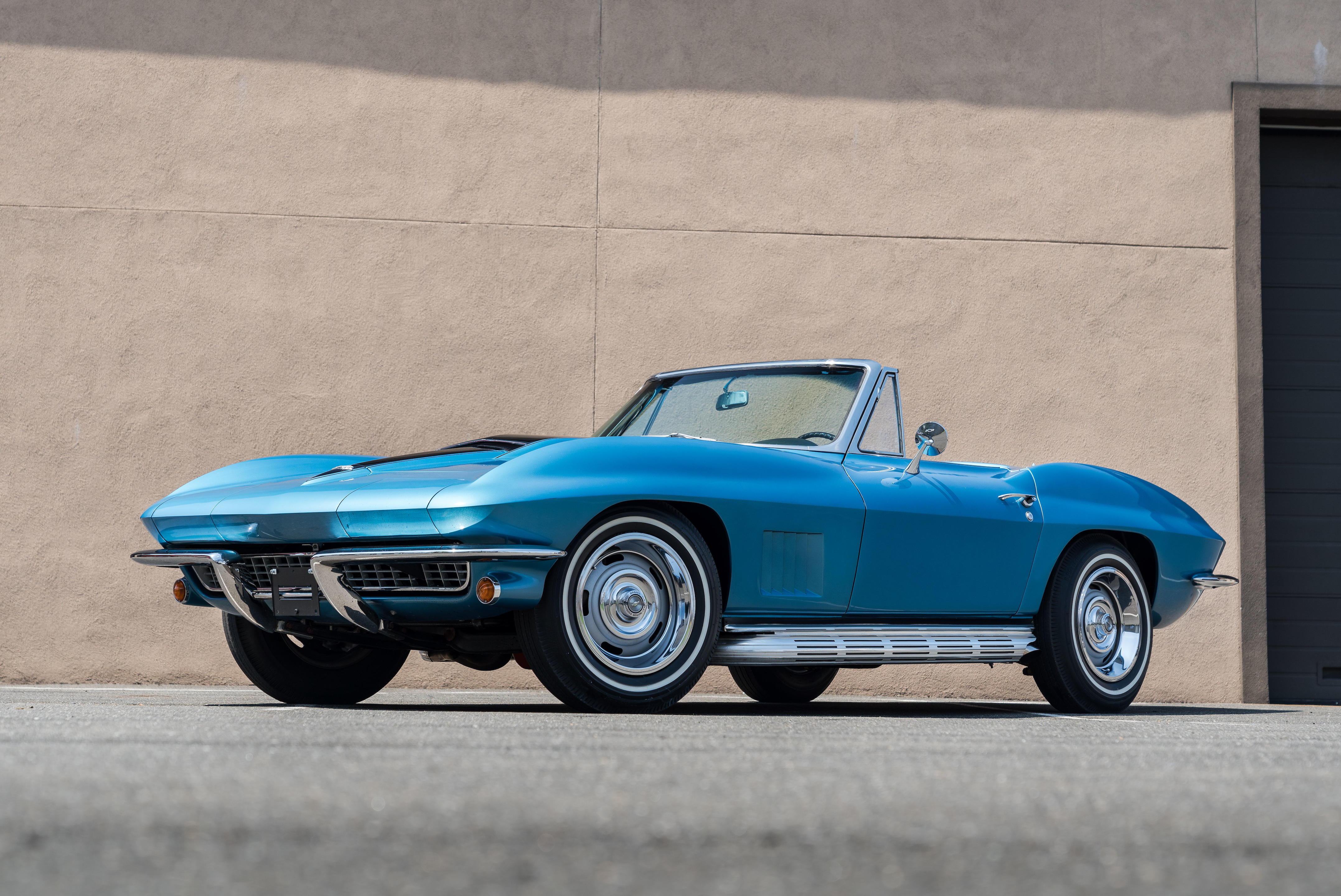


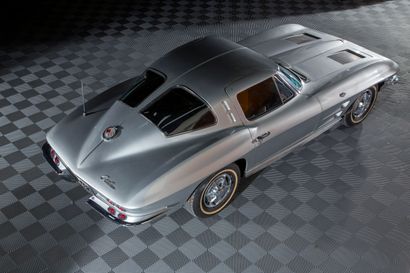
Testen Sie LotSearch und seine Premium-Features 7 Tage - ohne Kosten!
Lassen Sie sich automatisch über neue Objekte in kommenden Auktionen benachrichtigen.
Suchauftrag anlegen